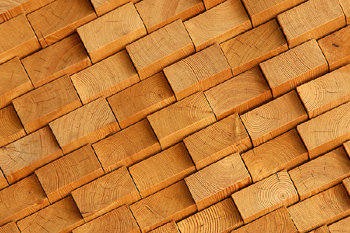How to Cure Wood
When you are using wood on a building project, that wood almost always needs to be cured. Those who buy wood at the lumber store aren’t going to need to dry their wood, since the lumberyard has dried the wood already. But if you are using your own lumber, you’re going to know how to cure wood.
Wood Curing Techniques
First of all, “curing wood” is the process of drying wood out from its living, organic state. A tree is full of moisture in the form of water and sap. This moisture needs to be out of the wood, before it makes suitable building material. There are several wood curing techniques, however, this guide only covers the air drying method.
Air drying wood is the cheapest and easiest way to cure lumber, but this might take you a year (or perhaps even more) to dry out the wood properly. Drying the wood in a kiln is the other option, but this is a lot more involved. A kiln is a furnace used to either burn or dry various materials, such as bricks, porcelain or lumber (different kilns for each).
Collect Stickers
Stickers are pieces of wood cut to put between layers of stacked wood. This lets air flow past each stick of wood, making it dry out faster. Remember that stickers need to be the same wood type as the lumber you are curing.
You use stickers for air drying wood. They are simple 1×1 pieces of wood. Remember that certain species of wood need to dry out, before you turn it into lumber. Check on the Internet for information about your wood species, if there’s any doubt.
Lay Out Lumber to Dry

How to Cure Wood
Place logs on the ground in 8-ft long pattern. Make sure the base logs are same species of wood as the wood you’re curing, with these stacks about 3′ to 4′ apart, so it’s easier to pick them up later. Place freshly cut lumber on these logs, so they are not touching the ground.
Layer the logs as you stick by placing stickers between each layer. In this way, you can stack lumber up to shoulder level or so. Don’t go so high that stacking or unstacking risks strains, tears and pulls, or is otherwise troublesome.
Air Cured Wood
Let the open air dry out the wood by letting the lumber sit for several months. Buy a moisture meter and use this to determine the amount of moisture content in your wood. Check an online moisture chart for your wood species. Each species has a different optimal moisture level for building.
Store the Cured Wood
Once the wood is properly dried, place the logs in a ventilated barn where it can remain dry, until use. You don’t want moisture constantly on or near your wood, because the wood is going to reabsorb a great deal of moisture. Not only does this make it hard to work with, but moist wood is likely to become warped or moldy. Both of those are really bad for construction projects.
Go to the Local Sawmill
If open air wood curing doesn’t sound like it works for you, consider kiln-dried lumber. For this, you’re going to need access to a professionally built kiln.
Find a sawmill in the area and ask the sawmill owner is they have kilns available for drying private lumber. It costs between 40-60 cents per board foot to dry wood this way, but that tends to be the easiest way to cure your wood.
If the sawmill doesn’t offer kilns for individuals, ask them if they know of a local kiln. Sawmill owners tend to know the local scene.
